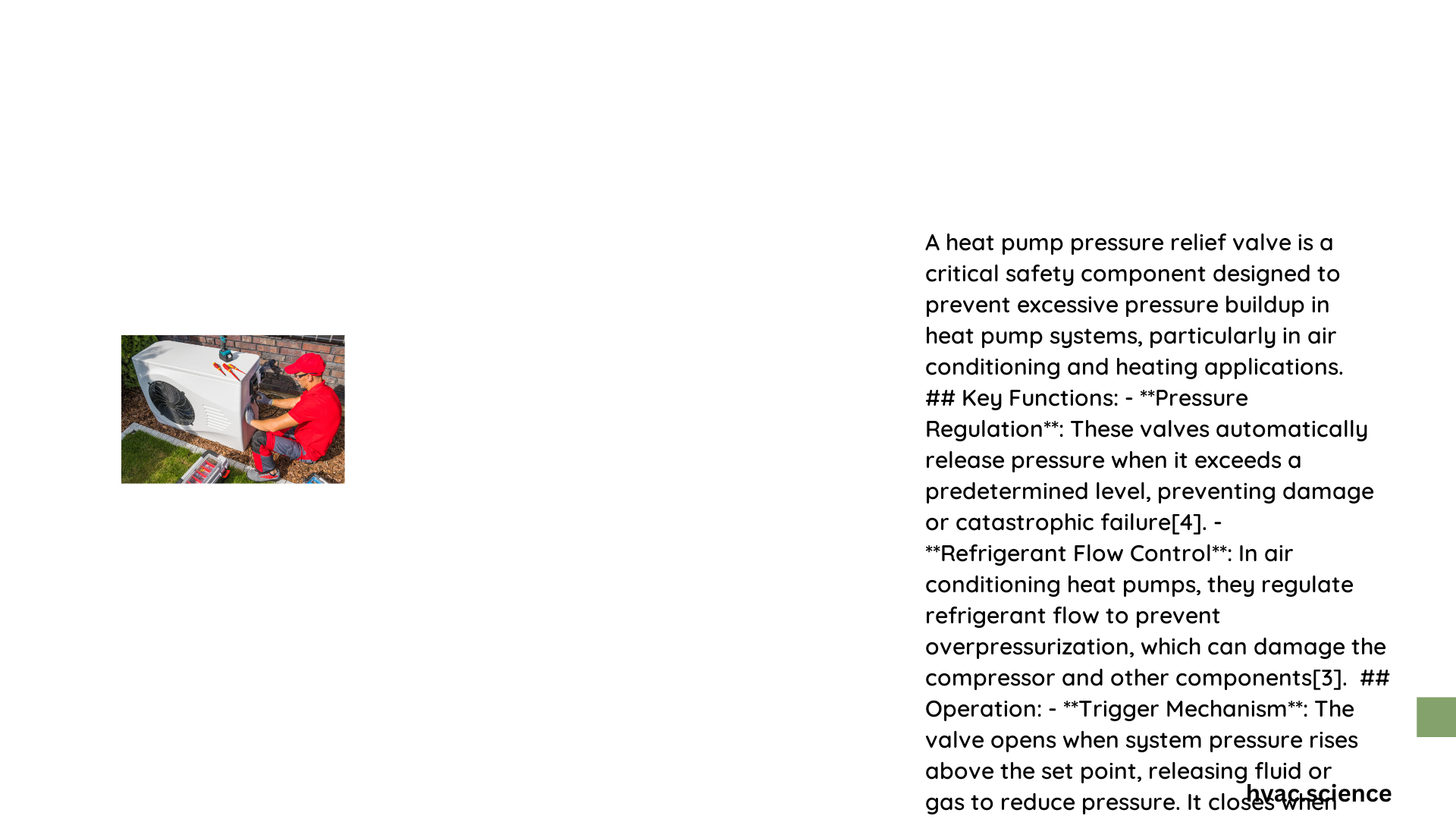A heat pump pressure relief valve is a critical safety component designed to prevent excessive pressure buildup in heating systems, protecting equipment from potential catastrophic failures by automatically releasing pressure when it exceeds predetermined safe limits. This specialized valve acts as a crucial guardian, ensuring system integrity and preventing potential damage or dangerous scenarios.
What Makes a Heat Pump Pressure Relief Valve Essential?
Why Do Heat Pump Systems Require Pressure Relief Valves?
Heat pump systems operate under varying temperature and pressure conditions, making pressure relief valves fundamental for several critical reasons:
- Safety Mechanism
- Prevents potential system explosions
- Protects against dangerous pressure accumulation
-
Ensures equipment longevity
-
Pressure Management
- Automatically releases excess pressure
- Maintains optimal system performance
- Prevents mechanical stress on components
How Does a Pressure Relief Valve Function?
Operational Principles
| Component | Function | Pressure Threshold |
|---|---|---|
| Spring-Loaded Mechanism | Triggers valve opening | Predetermined limit |
| Discharge Port | Releases excess pressure | System-specific range |
| Sealing Element | Prevents continuous leakage | Tight tolerance |
What Are the Key Installation Considerations?
Placement and Mounting Requirements
- Install valve at manufacturer-recommended location
- Ensure direct connection to pressure system
- Maintain clear discharge pathway
- Position within accessible maintenance area
How to Select the Right Pressure Relief Valve?
Crucial Selection Criteria
- Compatibility
- Match valve rating with system specifications
- Consider temperature and pressure ranges
-
Verify material compatibility
-
Performance Specifications
- Check maximum pressure tolerance
- Evaluate discharge capacity
- Review certification standards
What Maintenance Practices Ensure Optimal Performance?
Regular Inspection Protocols
- Conduct quarterly visual examinations
- Test valve functionality annually
- Check for corrosion or mechanical wear
- Verify discharge line remains unobstructed
What Are Common Troubleshooting Techniques?
Diagnostic Approach
- Pressure Anomaly Detection
- Monitor unusual discharge patterns
- Listen for unexpected hissing sounds
-
Check for persistent water leakage
-
Replacement Indicators
- Valve fails to close completely
- Visible physical damage
- Repeated pressure release events
Expert Recommendations
- Always follow manufacturer guidelines
- Use certified professional for complex installations
- Replace valves proactively every 5-7 years
- Maintain detailed maintenance records
Conclusion

Understanding and maintaining your heat pump pressure relief valve is crucial for system safety, efficiency, and longevity. Regular inspection, proper installation, and timely replacement are key to preventing potential system failures.
